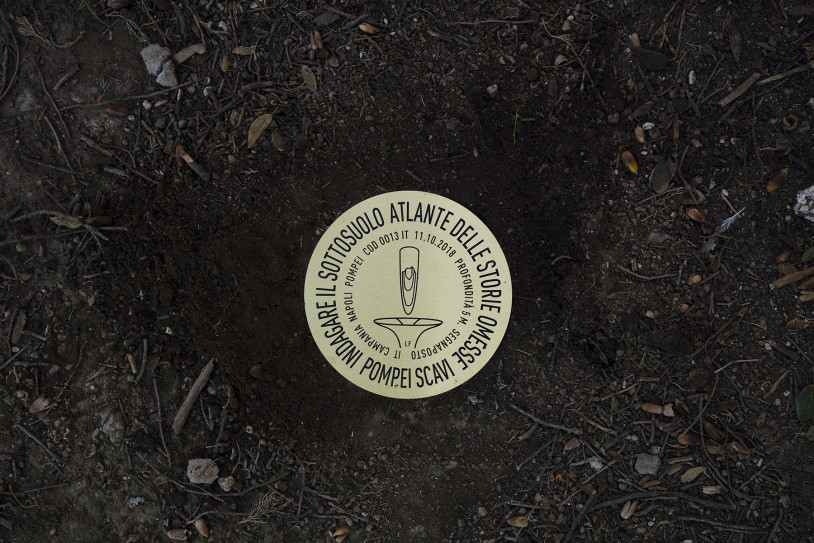
Mamo Rosar Amru, the last priest of Isis in Egypt, set sail one night and arrived in Pompeii to revive the Isiac mysteries on the Campania coast, building a temple dedicated to the goddess in the second century BC. This, at least, is the legend told by Giuliano Kremmerz, who lived in the late nineteenth and early twentieth century. He was member of a mysterious esoteric-Masonic cult that viewed the Temple of Isis in Pompeii as the power behind the movement. One of its members was Edward Bulwer-Lytton, who travelled to Italy in 1833 and found inspiration for his famous novel The Last Days of Pompeii (1834). But already in the eighteenth century, after the discovery in 1764 of the Temple of Isis, the first Egyptian temple that the Europeans had ever seen, modern Egyptology came into being and began to spread, giving new impetus to occultism. Alchemists and esotericists took over of the Isiac mysteries and gave them a modern twist, blending them with the theories and rites of the nascent Masonry. One of these was Raimondo di Sangro, Prince of Sansevero, the founder of the Egyptian-Osirian Order who commissioned the construction of a personal chapel inspired by the Temple of Isis in Pompeii, and another was the legendary Count Cagliostro, who made the order the basis for his new Masonic Rite of Memphis.
The Temple of Isis was visited by writers and artists from all over, and it offered them a rich repertoire of images, motifs and stories that became an important iconographic and literary source for works such as The Magic Flute, composed by Mozart in 1791.
The temple was next to the so-called Triangular Forum, one of the oldest areas of archaic Pompeii, which was a very different city from that of 79 AD, with a patchy urban structure. The much older Temple of Athena, on a stretch of the lava bank that gave onto the port on the river Sarno. was located here. The temple and the entire area had profound meaning, as well as being of religious importance, and they were in a scenic position, visible from a great distance, so they were important as signalling posts for trade. The name Triangular Forum comes from the shape of the temple and of the lava bank, which could be seen to be triangular both from the land and from the sea. It is believed that, after the cult of Athena came that of Hercules, the legendary founder of the city, and that, according to some sources, his legendary heroon, or hero’s tomb, is located here. It was said that the Greek hero, returning home from one of his labours, founded Herculaneum, and was then honoured by the natives with a sacred procession, or pompa, in the place where the city would later be built, recalling in its name the memory of that ceremony: “As he was coming through Campania from Spain, Hercules made a triumphal procession (pompa) in a Campania town, and this is how Pompeii got its name.”

The 0013 core sampling point is inside the Archaeological Park of Pompeii, in the space enclosed by the arcades of the Triangular Forum, opposite the entrance to the Great Theatre.
The Triangular Forum is on a lava spur overlooking the lower Sarno river valley.
The place was used for sacred functions as early as the sixth century BC, with the construction of a Greek-style temple dedicated to Athena. The heroic cult of Hercules, to whom a heroon was dedicated, was associated with the goddess. This space, which was given monumental form in the second century BC, was redeveloped in the Augustan age with an arcade with three arms. The 100 tuff columns surround a triangular space that contains the sacred area and the Greek-style temple.
The stratigraphy extracted by the 0013 core sampling consists mainly of backfill materials and does not include ancient layers.
The alternation of artificial accumulations (possible waste) to a depth of about 4.8 m – i.e. to the deep purple pyroclastites over the Pompeii lavas – suggests that this was a natural slope of the lava bank that had gradually been filled. It is hard to see if the waste comes from a levelling of the ground for the purpose of, and at the same time as, the arrangement of the colonnaded square.
Down to 1.5 m below ground level, the backfill contains fragments of tuff and also large pieces of plaster. Between 1.5 and 1.7 m, a layer of compacted soil was found with a 3 cm-high fragment of tuff cut by the core sampler. There is nothing to show that this level is related to a plan for developing or using the area.
Lower down, between 1.70 and 3.10 m, there is a layer of soils removed from the natural sequence and deposited here, evidently to level out the lava substrate.
The backfill found below this accumulation consists of cinerites around fragments of tuff, bricks and bones resting directly on the lava substrate.









































